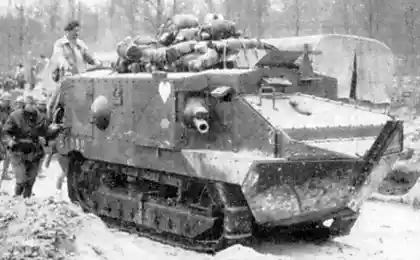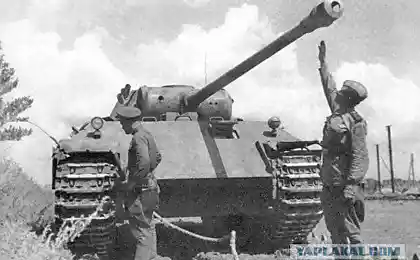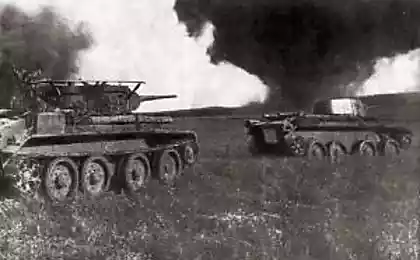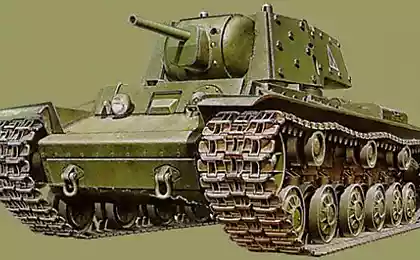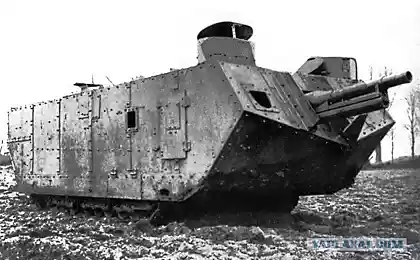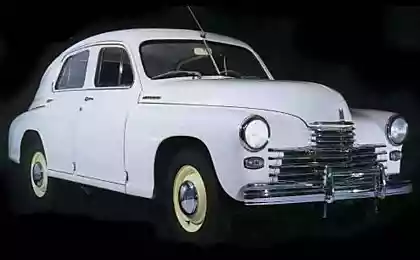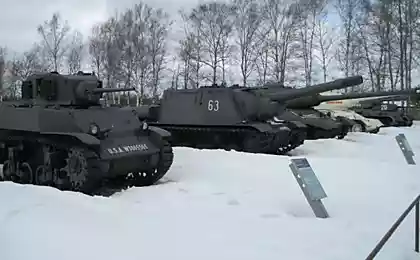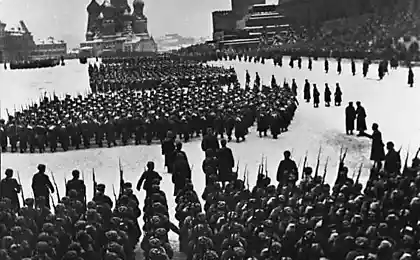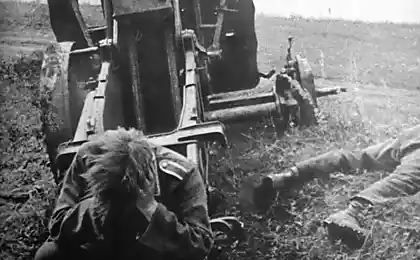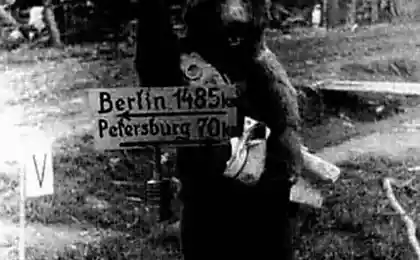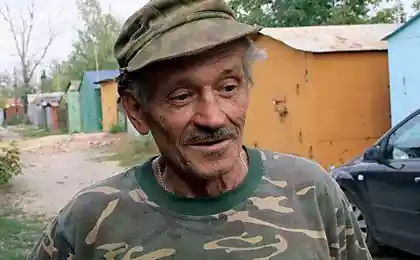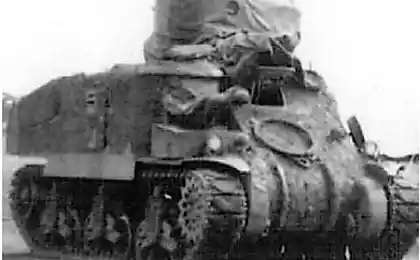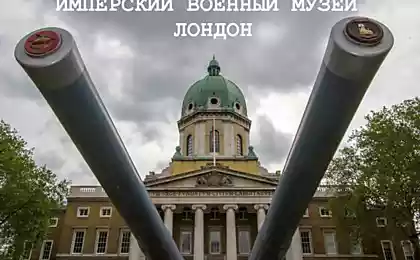1053
Frustrated tanks victory.
The history of the two famous tanks of the Second World War is very interesting. And it may explain not quite unambiguous assessment of the two machines, and gives an explanation of the failure of our tankers, which took place in the summer of 1941. The problem is that the series went even experimental and conceptual machine. None of these tanks was not created for the armament of the army. They had only to show how to look like a tank, its class. The pre-war tanks production plant № 183. From left to right: BT-7, A-20, T-34-76 with the gun A-11, T-34-76 with a gun F-34
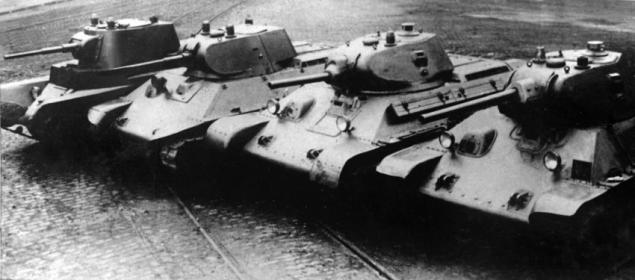
Let's start with HF. When the country's leadership council realized that the available armed with tanks, obsolete so much that has not tanks. That decision was made on the creation of new technology. It was made, and certain requirements for this technique. So heavy tank, was to have protivosnaryadnym book and a few guns, a few towers. Under the technical project was started designing machines the name of T-100 and QMS.
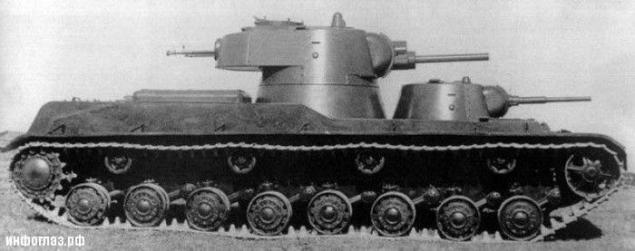
QMS
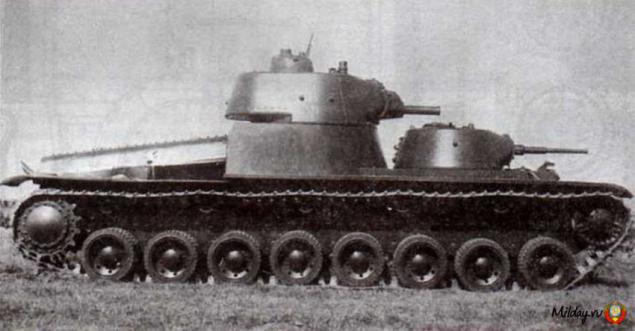
T-100

But the designer QMS Kotin believed that heavy tank to be odnobashennym. And he had the idea to create another machine. But still it was occupied by CB ordered the creation of the JMC. And then he was lucky, the plant arrived at the thesis project of the armored group of students of the Academy. That these "students" and trust to create a new tank. Those without hesitation shortened QMS body, leaving space for a tower. In this second tower stuck a gun instead of a machine gun. And the gun was moved to the stern of the tower niche. Armor increased, bringing a lot to the project specified in the job. We poke assemblies, drawings, which were studied in the academy. Taken even from the American tractor units, out of production in the United States, 20 years before. But the suspension did not change, with a copy of the QMS. Despite, the fact that the length of the tank decreased by 1, 5 times. And the number of suspension assemblies decreased by the same number. A load on them increased. The only thing that made themselves "students" is to put a diesel engine. And to these drawings and created KV. Presentation to the test with the T-100 and QMS.
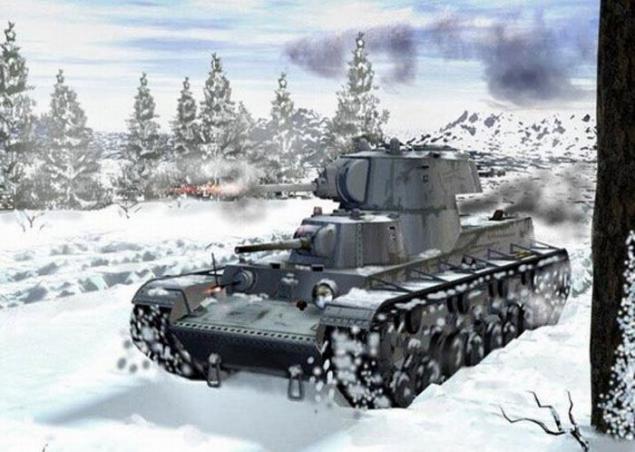
The first HF, autumn 1939
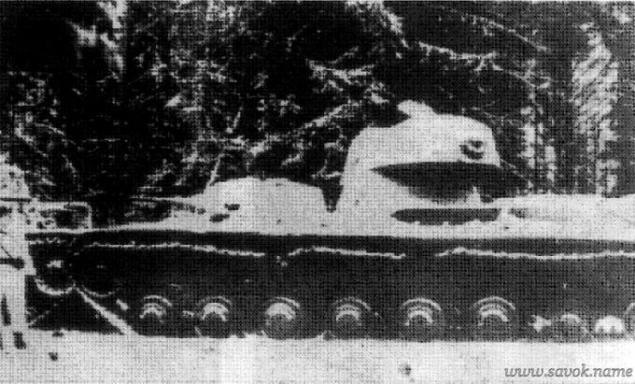
But then the war started and Finnish all three tanks was sent to the front. That showed superiority over the rest of the concept KV tanks. And the tank, despite the objections of chief designer, was adopted. It began soon World War II, revealed all the flaws of designing HF. Tank proved extremely reliable, especially those tanks suffered damage and suspension units copied from the American tractor. As a result, in 1941 only about 20% of these machines were lost by enemy fire. The rest were thrown out due to breakdowns.

QMS battle

Explosion landmine QMS deep in the Finnish position
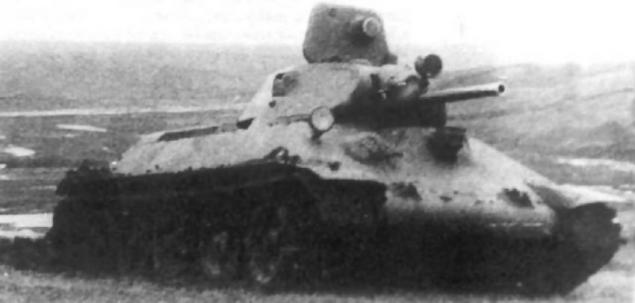
The military general that people are conservative. If they considered heavy tank many-tower, it is a piper. And if the tanks for the raids were wheel-tracked, it is such a machine they ordered. In exchange for a series of tanks BT-7. But they wanted to get the car protected from anti-tank artillery. What was supposed to make a sloping armor. Here on such a car and issued a military order CB Koshkin in Kharkov.
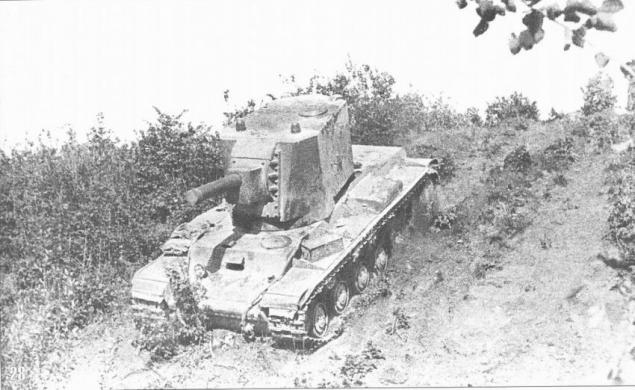
A-20

A-32

But he saw a very different car. Therefore, together with the military ordered the car has received index A-20, he did almost exactly the same as A-32. Almost 2 exceptions. First it was removed mechanism of movement on wheels. Second to A-32 was 76, 2 mm cannon. Instead of 45 mm on the A-20. Moreover, A-weighed 32 ton less than A-20. And tests A-32 shown to be more preferable than the A-20. Especially when the following modification was vypushena machine A-34 with a stronger armor gun and F-32, such as HF. True weight of the tank increased by 6 tons. And had inherited from the A-20 candle suspension became not withstand.

Tank A-34 (2nd prototype)

But the Red Army, badly in need of new tanks. And though, in the identified defects tank went into series. And even with a more powerful and heavy cannon F-34. Cat and designer Grabin cannon were familiar. Therefore, it is still before this gun was armed with a set of drawings. And based on their prepared place in the gun. And on average, the T-34, the gun proved more powerful than heavy KV. But as a result the costs of design, turned the situation closely, the situation with HF. T-34 first issues often throw due to breakage than because of combat damage.

The first HF, but the spring of 1940 after its conversion project KV-2. A tower with the first HF, who had a number of V-0, has been installed on the tank number of U-2.

We can not say that the designers did not identify the shortcomings of their machines. As soon as the struggle with the "childhood diseases" designs. As a result, by 1943 it managed to get the famous T-34 and KV about which we know. But in general, these machines were considered only as temporary, until the new tanks. So Kotin worked on the KV-3 with a 107-mm cannon. A KB in Kharkov on the T-34M. Project car with a transverse engine and vertical sides. T-34M had even run in the series. We have made around 50 sets of parts for the tank of this type. But to capture Kharkov a single tank had not fully assembled.
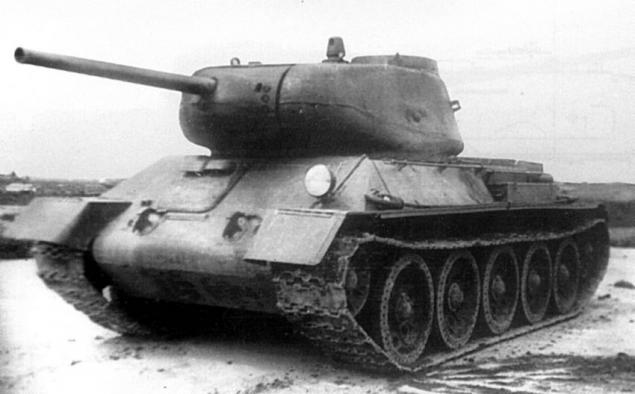
T-34M, also known as A-43.
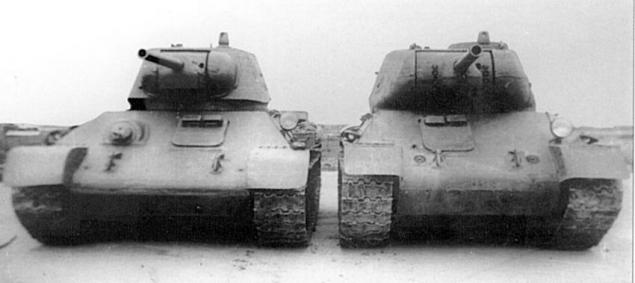
And so it happened that the tanks victory steel tanks, the occurrence of which was not provided. Their Adopting considered a temporary measure and not for long. Tanks which are not intended to be used as the main, and which were just concepts of design ideas.

We can not say that in 1940, after having been clarified shortcomings of our new tanks, no attempt was made to create a new machine. About T-34M, he wrote. There was an attempt to create a new and heavy tank. Get the index of KV-3. The project of this machine was an attempt to remove the shortcomings inherent in the tanks KV-1 and KV-2 (the same HF-1, but with a new tower and a 152 mm howitzer) was used in the project and the experience of war with the Finns. To equip the tank planned 107-mm cannon. However, testing the first sample of the gun had not gone well. Charges were hard and not comfortable to work with the ammunition of this size and weight. Therefore, the tank submitted for testing in the summer of 1941 he was still armed with the same 76 mm gun. But then the war started in September 1941, an experimental car went into battle on the Leningrad front. Because she did not return and officially unaccounted for. But there is a report of one of the commanders of the Red Army, who maintained that to break into the depth of the German defense tank was under fire from 105 mm howitzers German. From fire that detonated ammunition. With his towers, and the tank was completely destroyed.

HF-3. Layout.
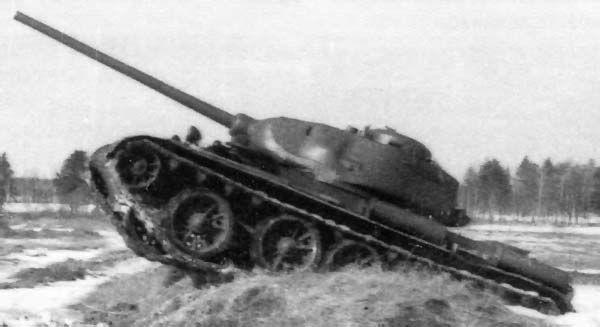
Shots kinohronniki probably familiar to all. They are seen semikatkovy KV-3 turret of the KV-1.

But neither the T-34M, or KV-3 before the war were not considered as the main tank of the Red Army. They should be a machine with the T-50. The prototype of this machine was created in 1940 and looks very much like the T-34, was only slightly smaller in size. But I had the same 45-mm sloped armor, though the car was armed 45-mm cannon and machine guns 3. The project is recognized not entirely successful, too high-tech machine is turned. And it could not master the plants on which it planned to produce. Yes, and too heavy tank turned to the class.
--img23--
T-126 Kubinka
--img24--
Then it was decided to reduce the thickness of the armor up to 37 mm, remove the gun exchange, and the tower did not put sporku machine guns and one machine gun. Apply a number of other technical solutions to reduce the weight and manufacturability. All this pushed the start of production on June 1941. And production machines appeared in the army after the war began. Results of these tanks were produced not much, a few dozen. The factory to produce them had been evacuated from Leningrad, and in a new place, it was decided to start the production of other types of machines.
--img25--
T-50
--img26--
His rival created at the Kirov plant
--img27--
But we will continue to talk about the unknown Soviet tanks 2nd World War. About the project T-34M, I wrote, but the achievements of the project were in demand. In 1943 it has been adopted the T-43, a direct descendant of the project T-34M. But the appearance on the battlefields of "Tigers" and "Panthers", did not allow this machine to go to a great series. But it was the basis for the best WWII tank T-44. By the middle of 1942 it became clear that the Red Army needs a new medium tank. Designing such a tank, known as T-43, completed by June 1943. The main requirement of the military, provide maximum protection with a minimum increase in weight, was performed. His body, which inherited the configuration of the T-34, already had a circular 75-mm book. The thickness of the frontal part of the tower, which was established 76 2-mm tank gun F-34, brought to 90 mm (45 mm against the T-34). But the length of the engine compartment to reduce failed, causing the fighting compartment will get less. Therefore, to ensure that the crew needed interior space, designers used torsion bar suspension, more compact than candle with vertical springs on tanks BT and T-34. Surpassing the T-34 on the armor protection and not inferior armament heavy tank KV-1 and KV-1S, medium tank T-43 however, approached the heavy tanks on the ground pressure, which has a negative impact on the cross and the power reserve. And his ultimate design came excluding further modernization. And when the serial "Thirty" equipped with 85-mm cannon, the need for T-43 temporarily disappeared, even though the tower from the T-43 with minor modifications was used for the T-34-85, so experience of him was not in vain. The fact that the test run on the T-43 three thousand. Km. clearly proved the right choice for medium tank torsion bar suspension and the futility of gradual change in the traditional layout.
--img28--
T-43
--img29--
T-34 and T-43
--img30--
It became clear that we need a fundamentally different machine. It was her and began designing in KB Morozov. As a result, work and get a T-44. To create a T-44 started in late 1943. The new tank received the designation of "Object 136" and in the series - the designation T-44. On the new machine not only applied transverse engine, but also a number of other technical innovations. Being embedded separately on different tanks, they would not give a tangible effect, but together made the design a T-44, which for decades has determined the development of Russian armored vehicles. The height of the engine compartment reduced by transferring a new type of air purifier from the cylinders V-type engine to the board. Incidentally, the diesel V-44 is equipped with an improved fuel equipment that allowed to increase power from 500 to 520 liters. from. with the same volume of cylinders as in the previous B-34. The fan, played for housing dimensions, placed compact flywheel. This made it possible to mount a diesel engine at a low, tough but light motor frame and as a result of body height decreased by 300 mm.
--img31--
Two samples of experimental T-44
--img32--
The average T-44 and its German analogue tyadёly T-V «Panther».
--img33--
And made other positive developments that could not be implemented in the production of T-34. So the new scheme of the engine compartment shifted the tower of the new construction with 85-mm gun ZIS-S-53 in the center of the body, where tankers less impacted tiring angular oscillations of the machine, and the long-barreled gun could not stick to the ground when driving on rough terrain. And increased accuracy. And most importantly, such alignment has allowed the designers to bring the thickness of the frontal armor plate 120 mm without overloading the front rollers. Add that to the strength of frontal sheet contributed to the transfer of the driver's hatch on the roof of the housing, and the abandonment of the ball setting a course gun as combat experience revealed his lack of effectiveness. The new tank gun course was rigidly attached to the bow of the hull and on the empty place next to the driver-mechanic put the fuel tank. On the prototype T-44-85 between the second and third road wheels was a small gap. On serial machines gap was between the first and second rollers. As such, the T-44 has successfully passed state tests and was accepted in 1944 by the Red Army. T-44 series were produced in Kharkov.
--img34--
T-44
--img35--
Since the end of 1944 and 1945 were produced 965 tanks. T-44 did not participate in the fighting. Although the troops began to arrive in the spring of 1945. Since May 9, 1945, to adopt the individual Guards Tank Brigade received 160 tanks of this type. Which is in the 2nd tier of the army. And that must have been an unpleasant surprise for the Germans, in the case of the onset of new types of tanks. For example developed "Panther 2". But the need for this type of tank have arisen. And the T-44, did not take part in hostilities. Even against Japan. Dropped thus out of sight of military historians. It's a pity. Because this tank was the best tank of the 2nd World.
--img36--
--img37--
Source:

Let's start with HF. When the country's leadership council realized that the available armed with tanks, obsolete so much that has not tanks. That decision was made on the creation of new technology. It was made, and certain requirements for this technique. So heavy tank, was to have protivosnaryadnym book and a few guns, a few towers. Under the technical project was started designing machines the name of T-100 and QMS.

QMS

T-100

But the designer QMS Kotin believed that heavy tank to be odnobashennym. And he had the idea to create another machine. But still it was occupied by CB ordered the creation of the JMC. And then he was lucky, the plant arrived at the thesis project of the armored group of students of the Academy. That these "students" and trust to create a new tank. Those without hesitation shortened QMS body, leaving space for a tower. In this second tower stuck a gun instead of a machine gun. And the gun was moved to the stern of the tower niche. Armor increased, bringing a lot to the project specified in the job. We poke assemblies, drawings, which were studied in the academy. Taken even from the American tractor units, out of production in the United States, 20 years before. But the suspension did not change, with a copy of the QMS. Despite, the fact that the length of the tank decreased by 1, 5 times. And the number of suspension assemblies decreased by the same number. A load on them increased. The only thing that made themselves "students" is to put a diesel engine. And to these drawings and created KV. Presentation to the test with the T-100 and QMS.

The first HF, autumn 1939

But then the war started and Finnish all three tanks was sent to the front. That showed superiority over the rest of the concept KV tanks. And the tank, despite the objections of chief designer, was adopted. It began soon World War II, revealed all the flaws of designing HF. Tank proved extremely reliable, especially those tanks suffered damage and suspension units copied from the American tractor. As a result, in 1941 only about 20% of these machines were lost by enemy fire. The rest were thrown out due to breakdowns.

QMS battle

Explosion landmine QMS deep in the Finnish position

The military general that people are conservative. If they considered heavy tank many-tower, it is a piper. And if the tanks for the raids were wheel-tracked, it is such a machine they ordered. In exchange for a series of tanks BT-7. But they wanted to get the car protected from anti-tank artillery. What was supposed to make a sloping armor. Here on such a car and issued a military order CB Koshkin in Kharkov.

A-20

A-32

But he saw a very different car. Therefore, together with the military ordered the car has received index A-20, he did almost exactly the same as A-32. Almost 2 exceptions. First it was removed mechanism of movement on wheels. Second to A-32 was 76, 2 mm cannon. Instead of 45 mm on the A-20. Moreover, A-weighed 32 ton less than A-20. And tests A-32 shown to be more preferable than the A-20. Especially when the following modification was vypushena machine A-34 with a stronger armor gun and F-32, such as HF. True weight of the tank increased by 6 tons. And had inherited from the A-20 candle suspension became not withstand.

Tank A-34 (2nd prototype)

But the Red Army, badly in need of new tanks. And though, in the identified defects tank went into series. And even with a more powerful and heavy cannon F-34. Cat and designer Grabin cannon were familiar. Therefore, it is still before this gun was armed with a set of drawings. And based on their prepared place in the gun. And on average, the T-34, the gun proved more powerful than heavy KV. But as a result the costs of design, turned the situation closely, the situation with HF. T-34 first issues often throw due to breakage than because of combat damage.

The first HF, but the spring of 1940 after its conversion project KV-2. A tower with the first HF, who had a number of V-0, has been installed on the tank number of U-2.

We can not say that the designers did not identify the shortcomings of their machines. As soon as the struggle with the "childhood diseases" designs. As a result, by 1943 it managed to get the famous T-34 and KV about which we know. But in general, these machines were considered only as temporary, until the new tanks. So Kotin worked on the KV-3 with a 107-mm cannon. A KB in Kharkov on the T-34M. Project car with a transverse engine and vertical sides. T-34M had even run in the series. We have made around 50 sets of parts for the tank of this type. But to capture Kharkov a single tank had not fully assembled.

T-34M, also known as A-43.

And so it happened that the tanks victory steel tanks, the occurrence of which was not provided. Their Adopting considered a temporary measure and not for long. Tanks which are not intended to be used as the main, and which were just concepts of design ideas.

We can not say that in 1940, after having been clarified shortcomings of our new tanks, no attempt was made to create a new machine. About T-34M, he wrote. There was an attempt to create a new and heavy tank. Get the index of KV-3. The project of this machine was an attempt to remove the shortcomings inherent in the tanks KV-1 and KV-2 (the same HF-1, but with a new tower and a 152 mm howitzer) was used in the project and the experience of war with the Finns. To equip the tank planned 107-mm cannon. However, testing the first sample of the gun had not gone well. Charges were hard and not comfortable to work with the ammunition of this size and weight. Therefore, the tank submitted for testing in the summer of 1941 he was still armed with the same 76 mm gun. But then the war started in September 1941, an experimental car went into battle on the Leningrad front. Because she did not return and officially unaccounted for. But there is a report of one of the commanders of the Red Army, who maintained that to break into the depth of the German defense tank was under fire from 105 mm howitzers German. From fire that detonated ammunition. With his towers, and the tank was completely destroyed.

HF-3. Layout.

Shots kinohronniki probably familiar to all. They are seen semikatkovy KV-3 turret of the KV-1.

But neither the T-34M, or KV-3 before the war were not considered as the main tank of the Red Army. They should be a machine with the T-50. The prototype of this machine was created in 1940 and looks very much like the T-34, was only slightly smaller in size. But I had the same 45-mm sloped armor, though the car was armed 45-mm cannon and machine guns 3. The project is recognized not entirely successful, too high-tech machine is turned. And it could not master the plants on which it planned to produce. Yes, and too heavy tank turned to the class.
--img23--
T-126 Kubinka
--img24--
Then it was decided to reduce the thickness of the armor up to 37 mm, remove the gun exchange, and the tower did not put sporku machine guns and one machine gun. Apply a number of other technical solutions to reduce the weight and manufacturability. All this pushed the start of production on June 1941. And production machines appeared in the army after the war began. Results of these tanks were produced not much, a few dozen. The factory to produce them had been evacuated from Leningrad, and in a new place, it was decided to start the production of other types of machines.
--img25--
T-50
--img26--
His rival created at the Kirov plant
--img27--
But we will continue to talk about the unknown Soviet tanks 2nd World War. About the project T-34M, I wrote, but the achievements of the project were in demand. In 1943 it has been adopted the T-43, a direct descendant of the project T-34M. But the appearance on the battlefields of "Tigers" and "Panthers", did not allow this machine to go to a great series. But it was the basis for the best WWII tank T-44. By the middle of 1942 it became clear that the Red Army needs a new medium tank. Designing such a tank, known as T-43, completed by June 1943. The main requirement of the military, provide maximum protection with a minimum increase in weight, was performed. His body, which inherited the configuration of the T-34, already had a circular 75-mm book. The thickness of the frontal part of the tower, which was established 76 2-mm tank gun F-34, brought to 90 mm (45 mm against the T-34). But the length of the engine compartment to reduce failed, causing the fighting compartment will get less. Therefore, to ensure that the crew needed interior space, designers used torsion bar suspension, more compact than candle with vertical springs on tanks BT and T-34. Surpassing the T-34 on the armor protection and not inferior armament heavy tank KV-1 and KV-1S, medium tank T-43 however, approached the heavy tanks on the ground pressure, which has a negative impact on the cross and the power reserve. And his ultimate design came excluding further modernization. And when the serial "Thirty" equipped with 85-mm cannon, the need for T-43 temporarily disappeared, even though the tower from the T-43 with minor modifications was used for the T-34-85, so experience of him was not in vain. The fact that the test run on the T-43 three thousand. Km. clearly proved the right choice for medium tank torsion bar suspension and the futility of gradual change in the traditional layout.
--img28--
T-43
--img29--
T-34 and T-43
--img30--
It became clear that we need a fundamentally different machine. It was her and began designing in KB Morozov. As a result, work and get a T-44. To create a T-44 started in late 1943. The new tank received the designation of "Object 136" and in the series - the designation T-44. On the new machine not only applied transverse engine, but also a number of other technical innovations. Being embedded separately on different tanks, they would not give a tangible effect, but together made the design a T-44, which for decades has determined the development of Russian armored vehicles. The height of the engine compartment reduced by transferring a new type of air purifier from the cylinders V-type engine to the board. Incidentally, the diesel V-44 is equipped with an improved fuel equipment that allowed to increase power from 500 to 520 liters. from. with the same volume of cylinders as in the previous B-34. The fan, played for housing dimensions, placed compact flywheel. This made it possible to mount a diesel engine at a low, tough but light motor frame and as a result of body height decreased by 300 mm.
--img31--
Two samples of experimental T-44
--img32--
The average T-44 and its German analogue tyadёly T-V «Panther».
--img33--
And made other positive developments that could not be implemented in the production of T-34. So the new scheme of the engine compartment shifted the tower of the new construction with 85-mm gun ZIS-S-53 in the center of the body, where tankers less impacted tiring angular oscillations of the machine, and the long-barreled gun could not stick to the ground when driving on rough terrain. And increased accuracy. And most importantly, such alignment has allowed the designers to bring the thickness of the frontal armor plate 120 mm without overloading the front rollers. Add that to the strength of frontal sheet contributed to the transfer of the driver's hatch on the roof of the housing, and the abandonment of the ball setting a course gun as combat experience revealed his lack of effectiveness. The new tank gun course was rigidly attached to the bow of the hull and on the empty place next to the driver-mechanic put the fuel tank. On the prototype T-44-85 between the second and third road wheels was a small gap. On serial machines gap was between the first and second rollers. As such, the T-44 has successfully passed state tests and was accepted in 1944 by the Red Army. T-44 series were produced in Kharkov.
--img34--
T-44
--img35--
Since the end of 1944 and 1945 were produced 965 tanks. T-44 did not participate in the fighting. Although the troops began to arrive in the spring of 1945. Since May 9, 1945, to adopt the individual Guards Tank Brigade received 160 tanks of this type. Which is in the 2nd tier of the army. And that must have been an unpleasant surprise for the Germans, in the case of the onset of new types of tanks. For example developed "Panther 2". But the need for this type of tank have arisen. And the T-44, did not take part in hostilities. Even against Japan. Dropped thus out of sight of military historians. It's a pity. Because this tank was the best tank of the 2nd World.
--img36--
--img37--
Source:

